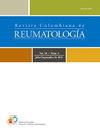Características de los pacientes reumáticos que consultan fuentes de información digitales
Q3 Health Professions
引用次数: 0
Abstract
Introduction
Many patients use the Internet as a source of health information and to create and share content of diverse quality of evidence, complementing and even competing with traditional sources of information.
Objectives
To evaluate differences between rheumatic patients who consult digital information sources (DISs) and those who do not (Non-DISs), and their perception of the credibility attributed to these sources by both groups.
Materials and methods
An observational cross-sectional study was conducted through an anonymous survey of patients with rheumatoid arthritis, systemic lupus erythematosus, systemic sclerosis, and spondyloarthritis. Patients were asked about their search for information from different DISs or Non-DISs. Patients rated the credibility they assigned to the different sources on a scale of 0 to 10, where 0 was no credibility and 10 was the maximum possible credibility.
Results
A total of 402 patients (79% female) were surveyed. Two hundred and 7 (51%) had consulted at least one DIS during the previous year (DISs group). The DISs group had consulted a total of 5 DISs and Non-DISs (First-Third Quartile: 3-7) vs. 2 (First-Third Quartile: 1-3) in the Non-DISs group (p< .001). The number of searches in DISs was higher at younger ages (OR .97 95% CI .95-.99) and at higher levels of education (secondary vs. primary OR 2.0; 95% CI 1.05-3.85). The DISs group assigned higher credibility to Facebook and YouTube than the other patients (median credibility of 6/10 and 6/10 vs. 2/10 and 1/10 respectively; P<.001). However, they did not assign lower credibility to traditional sources.
Conclusions
DISs are more frequently consulted by a younger population with a higher level of education. These patients consult multiple sources, but do not assign lower credibility to traditional information sources.
查阅数字信息来源的风湿病患者的特征
许多患者使用互联网作为健康信息的来源,并创建和分享各种质量证据的内容,与传统的信息来源相补充,甚至竞争。目的评价咨询数字信息源(DISs)和不咨询数字信息源(Non-DISs)的风湿病患者之间的差异,以及两组患者对数字信息源可信度的感知。材料和方法通过匿名调查对类风湿关节炎、系统性红斑狼疮、系统性硬化症和脊椎关节炎患者进行了一项观察性横断面研究。患者被问及他们从不同的DISs或非DISs中搜索信息的情况。患者对他们分配给不同来源的可信度进行评分,从0到10,其中0代表没有可信度,10代表最大可能的可信度。结果共调查402例患者,其中女性79%。277人(51%)在前一年至少咨询过一次DIS (DIS组)。DISs组共咨询了5位DISs和Non-DISs(第一-第三四分位数:3-7),而Non-DISs组(p<;措施)。DISs的搜索次数在较年轻的年龄(OR .97 95% CI .95- 0.99)和较高的教育水平(中学对小学OR 2.0;95% ci 1.05-3.85)。与其他患者相比,DISs组对Facebook和YouTube的可信度更高(中位可信度分别为6/10和6/10 vs. 2/10和1/10;术;措施)。然而,他们并没有降低传统消息来源的可信度。结论较年轻、受教育程度较高的人群更常咨询diss。这些患者咨询了多个来源,但并不认为传统信息来源的可信度较低。
本文章由计算机程序翻译,如有差异,请以英文原文为准。
求助全文
约1分钟内获得全文
求助全文
来源期刊

Revista Colombiana de Reumatologia
Medicine-Rheumatology
CiteScore
0.80
自引率
0.00%
发文量
92
期刊介绍:
The Colombian Journal of Rheumatology (Revista Colombiana de Reumatología) is the official organ of the Colombian Association of Rheumatology (Asociación Colombiana de Reumatología) and the Central American, Caribbean and Andean Association of Rheumatology (Asociación Centroamericana Caribe Andina de Reumatología) - ACCA. It was created in December 1993 with the purpose of disseminating scientific information derived from primary and secondary research and presenting cases coming from the practice of Rheumatology in Latin America. Since its foundation, the Journal has been characterized by its plurality with subjects of all rheumatic and osteomuscular pathologies, in the form of original articles, historical articles, economic evaluations, and articles of reflection and education in Medicine. It covers an extensive area of topics ranging from the broad spectrum of the clinical aspects of rheumatology and related areas in autoimmunity (both in pediatric and adult pathologies), to aspects of basic sciences. It is an academic tool for the different members of the academic and scientific community at their different levels of training, from undergraduate to post-doctoral degrees, managing to integrate all actors inter and trans disciplinarily. It is intended for rheumatologists, general internists, specialists in related areas, and general practitioners in the country and abroad. It has become an important space in the work of all rheumatologists from Central and South America.
 求助内容:
求助内容: 应助结果提醒方式:
应助结果提醒方式:


